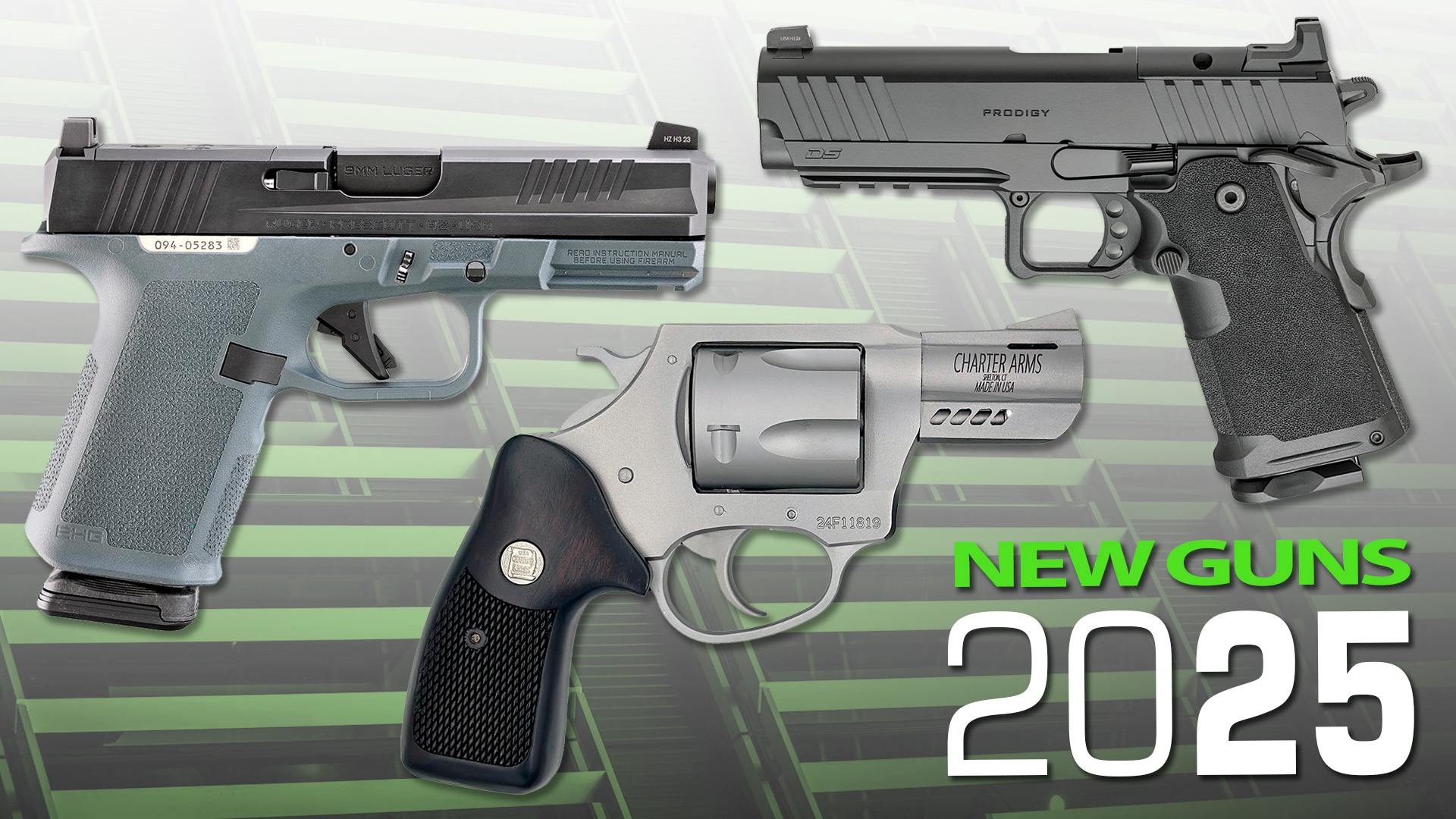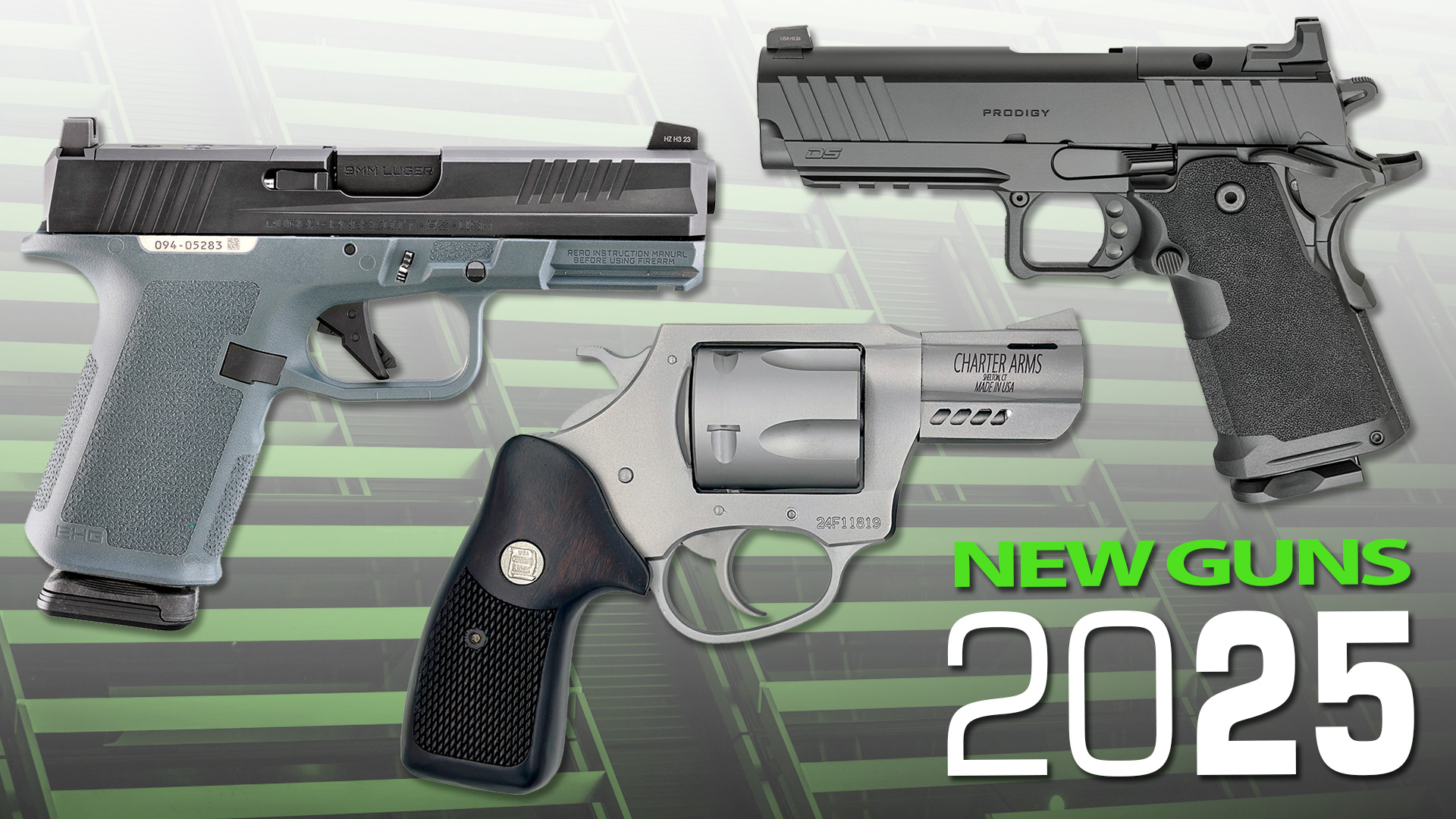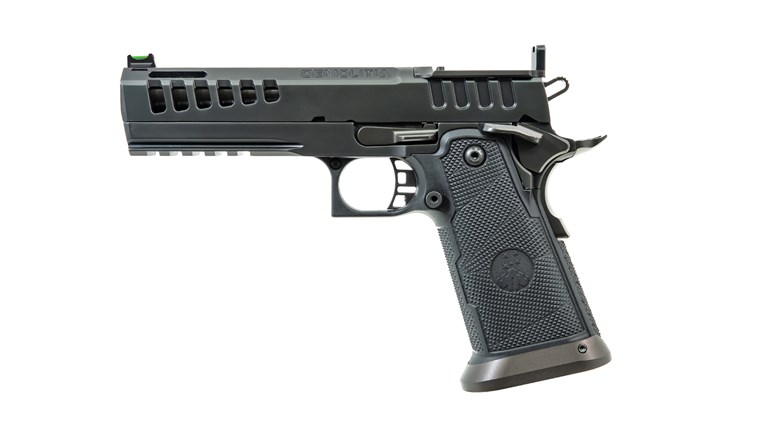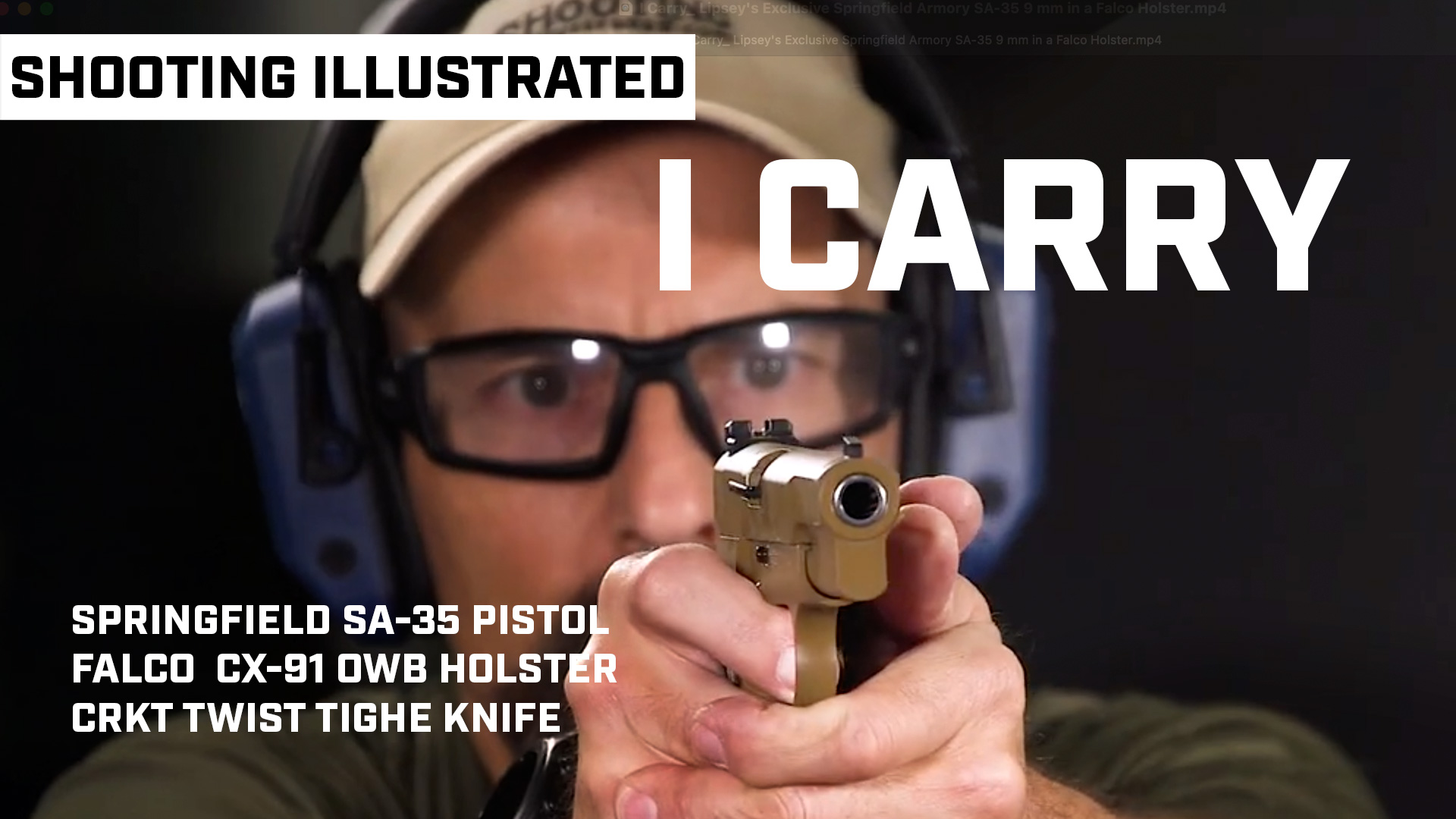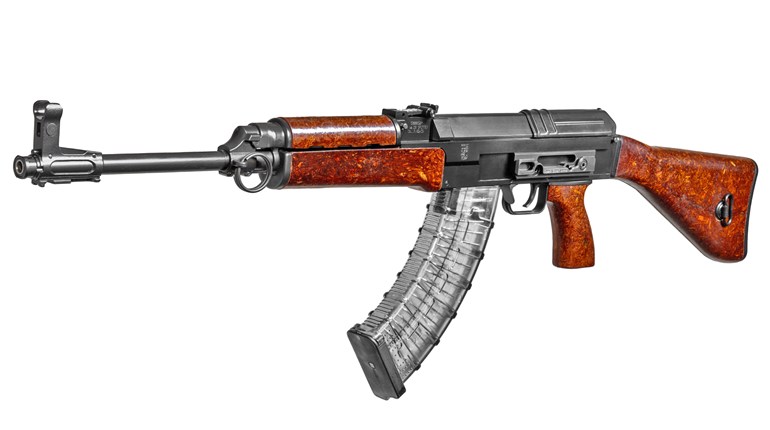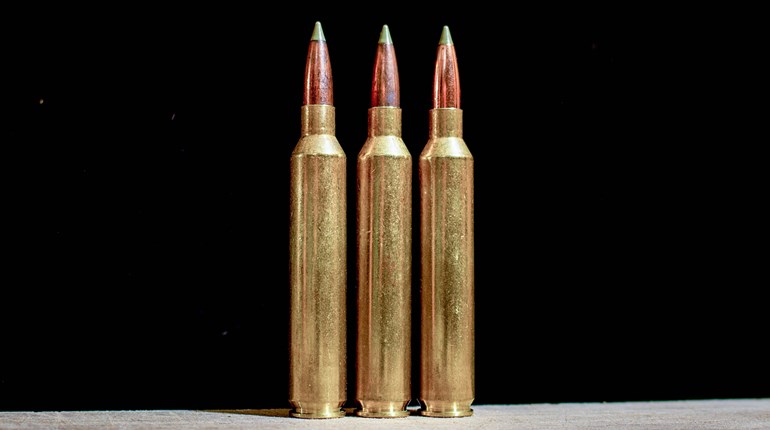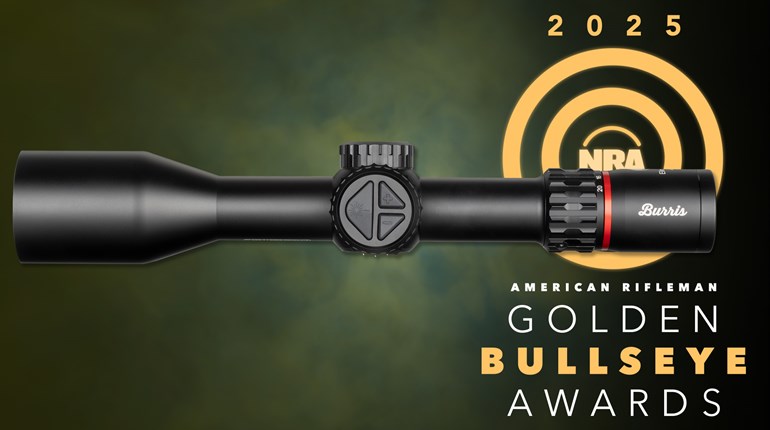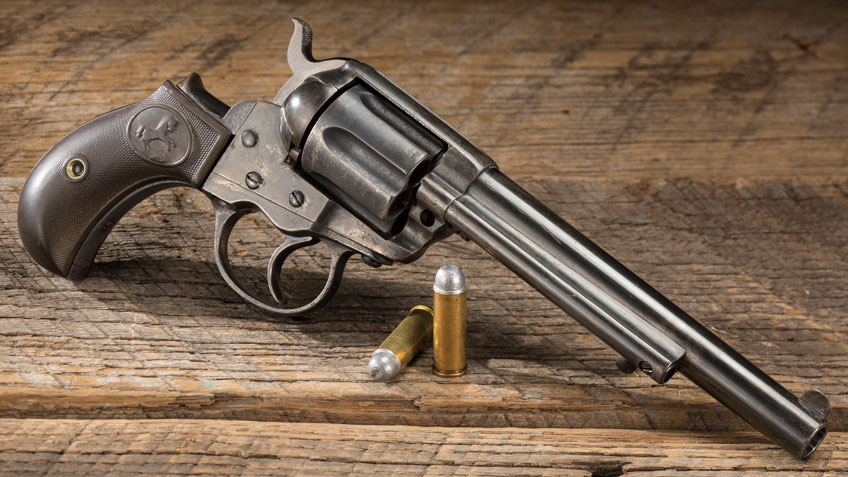
When Elmer Keith, with big Bill Jordan at his side, went looking for Smith & Wesson’s decision-makers at an NRA convention in the early 1960s, he was a man with a mission. These two legendary handgunners had decided that the nation’s peace officers needed a more-effective handgun. They took the concept to Smith & Wesson, where it was cautiously received. A medium-caliber, medium-size version (something close to the K-frame) of the standard Hand Ejector revolver didn’t seem to be that much to ask. An L-frame revolver was the goal, but that gun was years in the future. Keith and Jordan didn’t get it, but the gun they did enjoyed a steady popularity with sportsmen that continues to this day. Smith & Wesson’s .41 Mag. comes on the same large frame as the .44, and the Remington-designed .41 Mag. ammo is way too much of a kicker for police work. Sure, there was a reduced load for peace officers’ work, but the police-grade revolver that fired it was still too heavy. A few agencies picked it up, but way too few and, alas, the concept of a medium-frame, medium-bore revolver for police died out.
That’s a shame, really. There was a great deal of merit to the concept and not just for police service. It was also an idea that had some interesting history. Not from Smith & Wesson, but rather from Colt. As early as 1871, Colt was making a small revolver—called the New Line by collectors—chambered for a rimfire .41 cartridge of rather modest power. There were several variations of this model, but the Connecticut maker made a big step forward with yet another medium in 1877. Called the “Thunderer” in .41 caliber (“Lightning” in .38), the new gun was Colt’s first effort at a revolver that was trigger cocking. That’s 1870-speak for a double-action/single-action (DA/SA) trigger system. The revolver was made in considerable quantity, which is a little surprising. Lightnings and Thunderers had a bad reputation for breaking a major part in the lockwork. The new caliber lived long after the aforementioned revolver died.
Called the .41 Colt (and sometimes .41 Long Colt), the new round threw a 200-grain, .40- to .41-caliber round-nose lead bullet at about 750 fps. That is a fairly respectable close-range defensive load and the Thunderer got a lot of attention. More than 166,000 Lightning .38s and Thunderer .41s were sold, despite the breakage problem. Colt also chambered the legendary Peacemaker for the round, enough that the .41 Colt was the fifth most-popular chambering of that gun, behind .45 Colt, .44-40 WCF., .38-40 WCF. and the .32-20 WCF. When Colt began to offer DA/SA revolvers like the New Army and New Navy models, some of them were chambered in .41 Colt.
That evolved into the Army Special revolver, which became the legendary Official Police in 1927. Over the span (1877 to 1927), the manufacturer sold many thousands of .41 Colt revolvers. It changed the ammunition in several ways, the best one by dropping the heeled bullet. The way I read the history books, there hasn’t been a new .41 Colt revolver made by anybody since 1927-28. In the late 1930s, Colt’s John Henry Fitzgerald was working hard at developing a .41-caliber load that was essentially what Elmer was after in the 1960s. Even though the .41 was used by a number of Western luminaries, the hard truth was simple: The caliber was not broadly popular and did not sell. Sometime in the 1970s, even the ammo was discontinued. But this is what really happened and what really happened is called history.
Nowhere in the shooting world is history so revered as among the cowboy-action, competitive-shooting sports. Even though authenticity is sometimes carried to extremes, the general idea is to compete with guns of the old West, wearing period clothing and shooting in scenarios as realistic as possible. Folks who are involved in this type of competition are having a lot of fun, and I guess you could say that they keep interest in Western history alive. Many of the guns used are imported from Italy and the best of them are really fine handguns. In recent years, we have seen virtually every variation of the legendary Colt Peacemaker, from Storekeeper’s shorties to Buntline Specials. Three of the four variants of the No. 3 series of Smith & Wesson—Russian, Schofield and New Model—have been replicated. You can also get either 1875 or 1890 models of the Remington single-action, as well as every important caplock revolver, lever-action rifle and a host of other guns.
Several firms are bringing these guns into the country to be fired and enjoyed by latter-day cowboys. It looks like the most diverse catalog comes from Mike Harvey’s Cimarron Firearms of Fredericksburg, TX. Cimarron has it all, including a variation of the Peacemaker chambered for the subject at hand—the .41 Colt cartridge. The gun is a scaled-down version of the classic Colt that better suits pistoleros with smaller hands. It’s all there: case-hardened frame, polished blue barrel, butt and backstrap and one-piece walnut grip. Variations include several barrel lengths, as well as traditional or birdshead butt.
My sample gun is a 3.5-inch with the birdshead grip and is quite a classy-looking firearm. It is a beautifully crafted revolver that bears a striking resemblance to the highly identifiable Thunderer of 1877, differing only in the lack of a double-action trigger mode. The folks at Cimarron Firearms deserve the respect of firearms enthusiasts and fans of arms of the old West for going out on a limb and tooling up to make these guns. Moreover, it is my sincerest hope that these interesting and truly unique relics of yesteryear are remembered as proper fightin’ iron.


